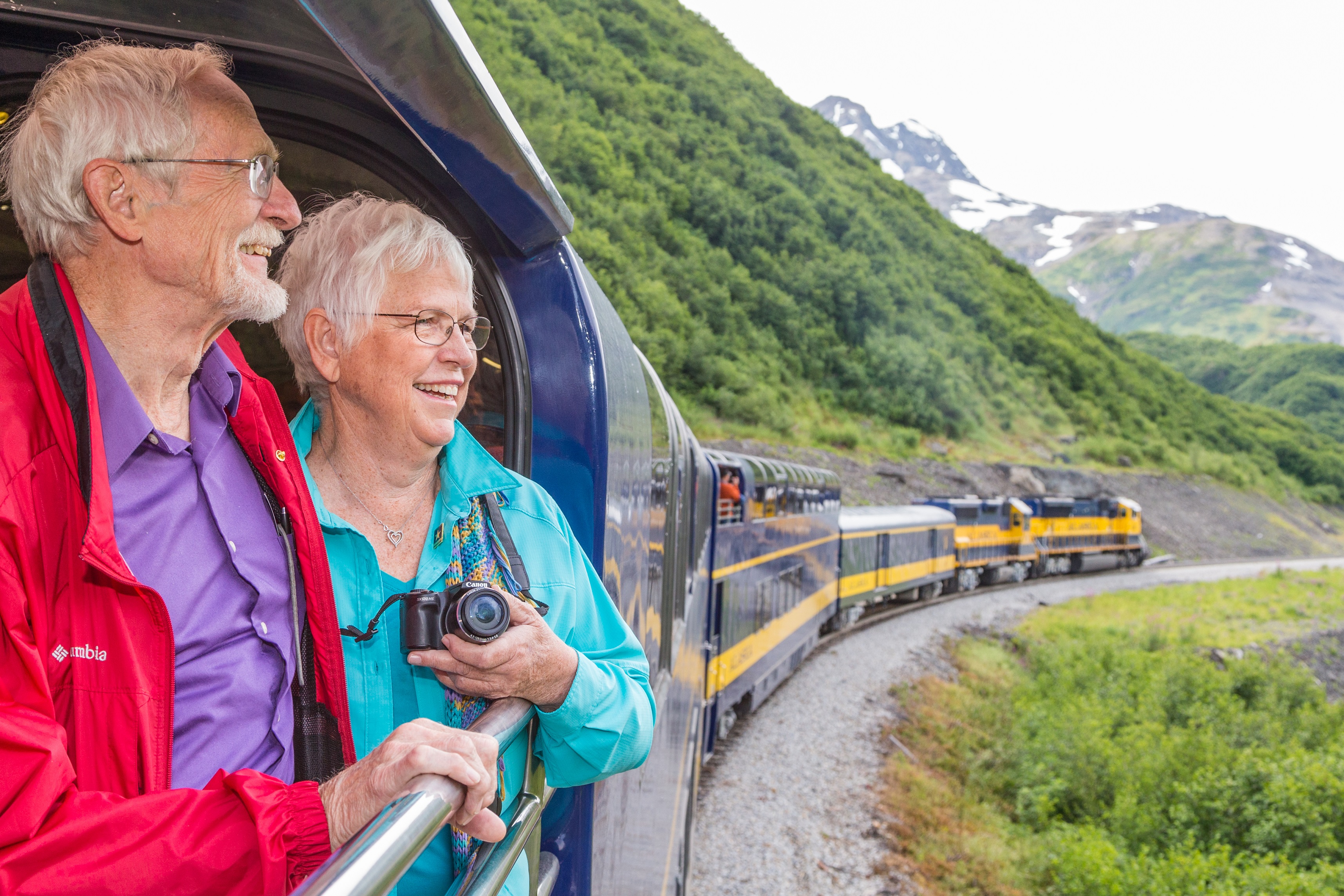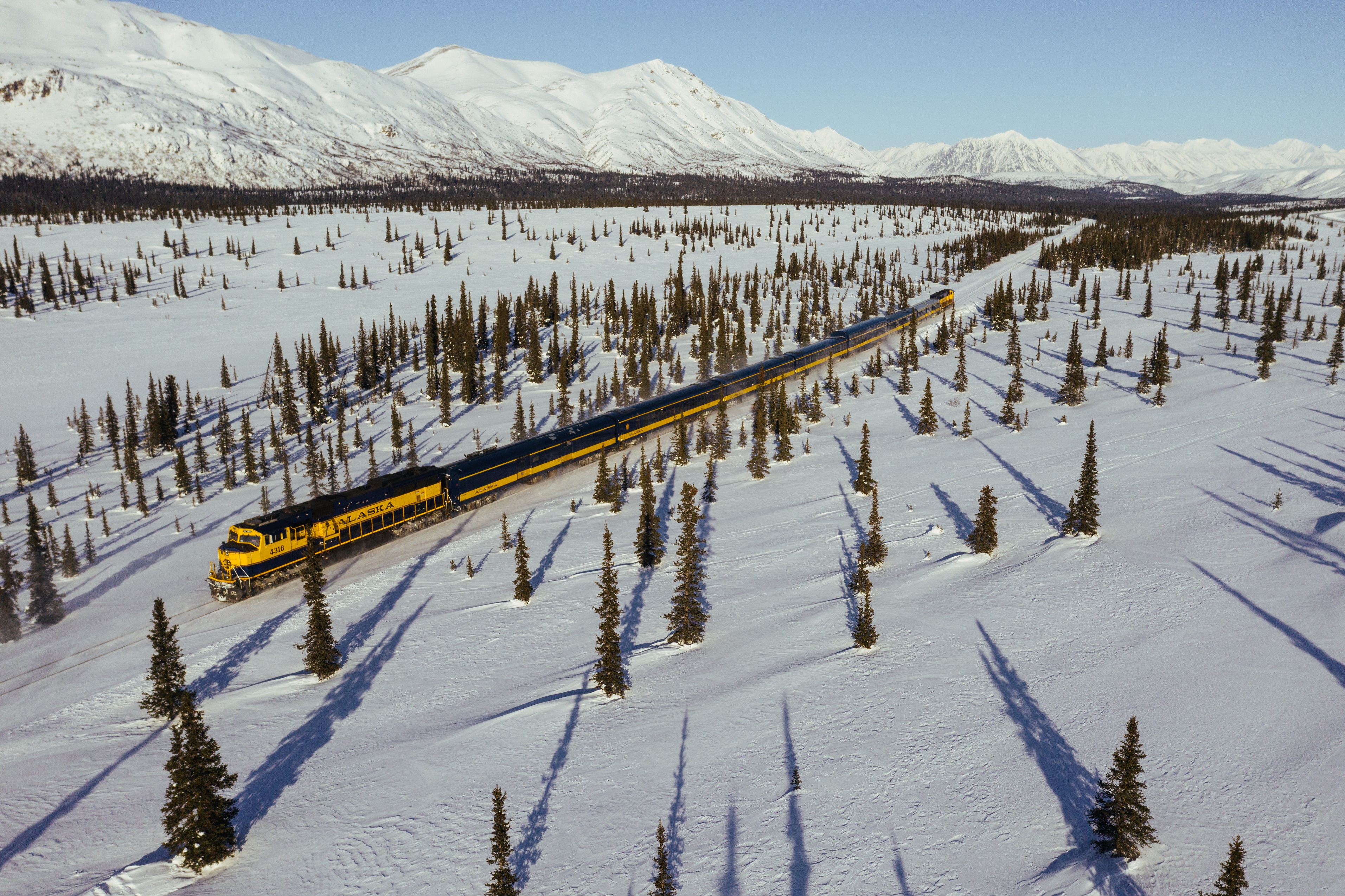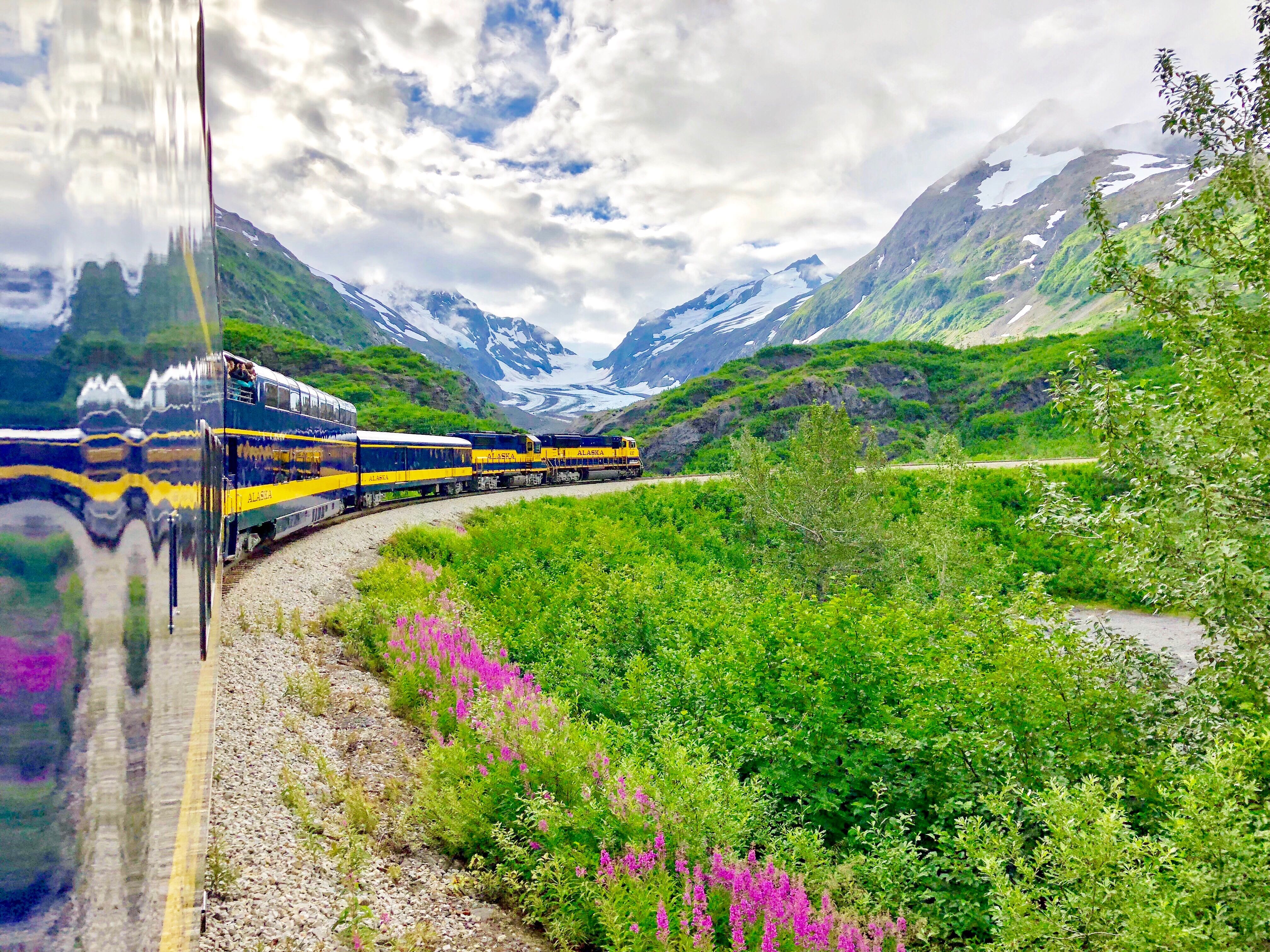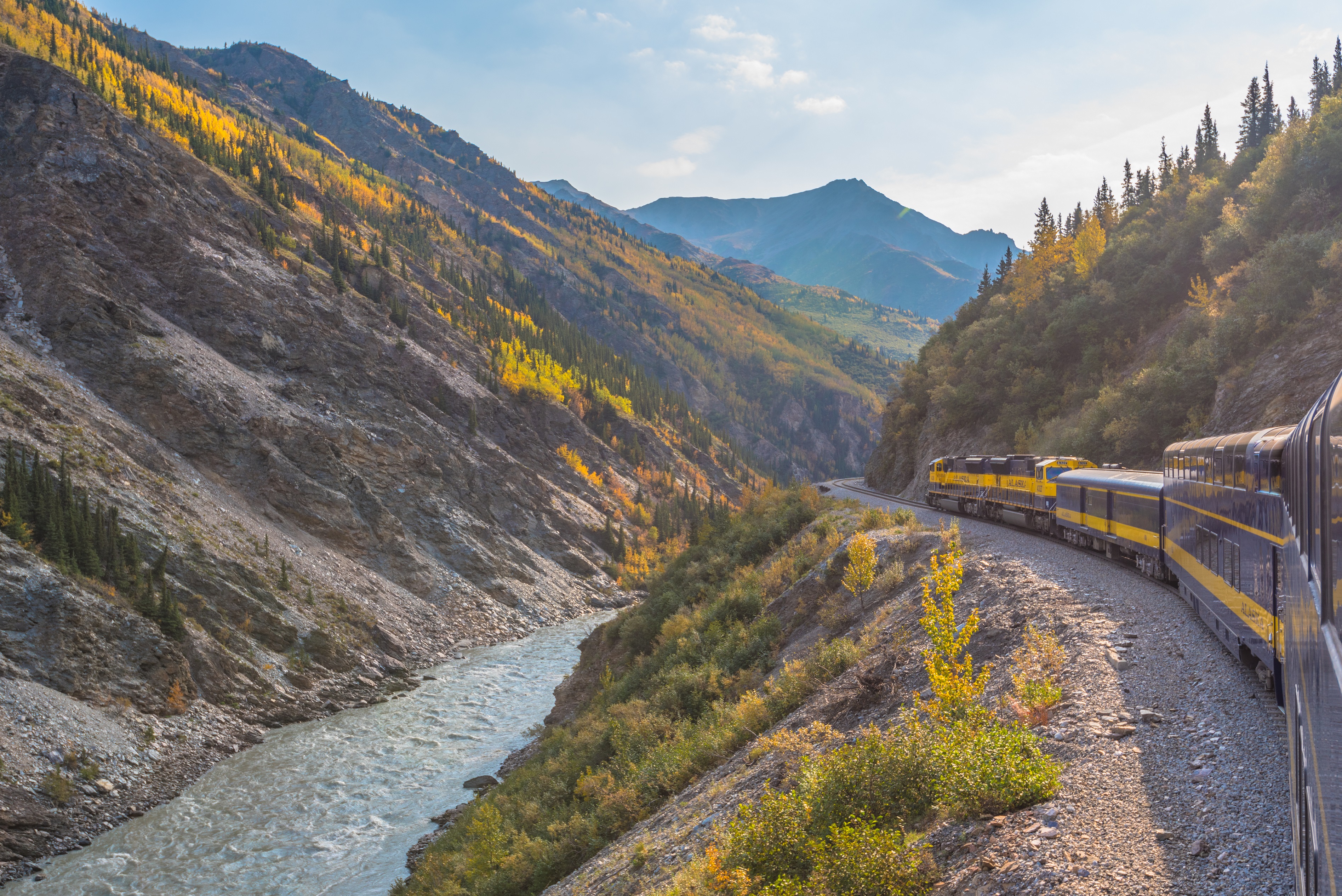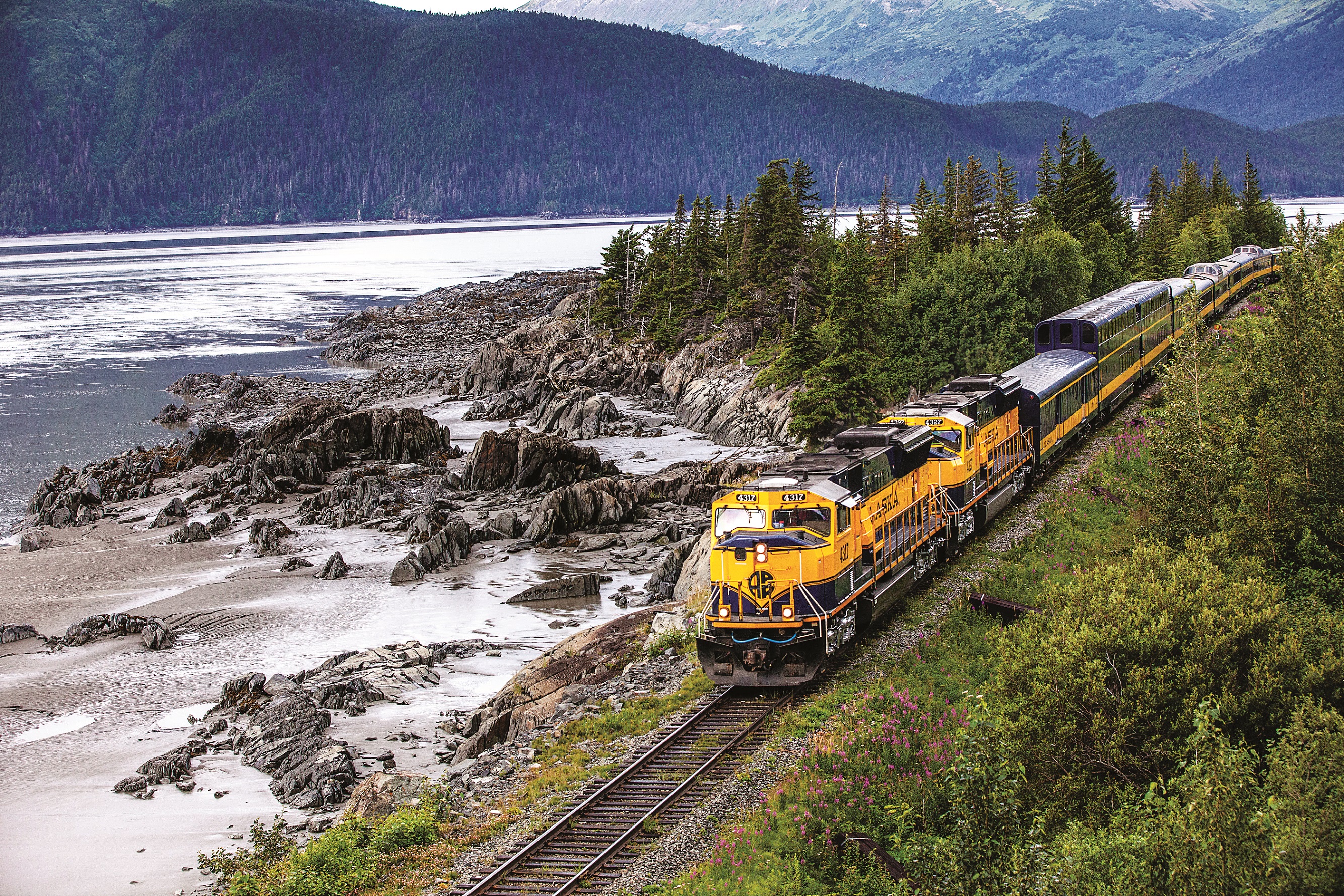

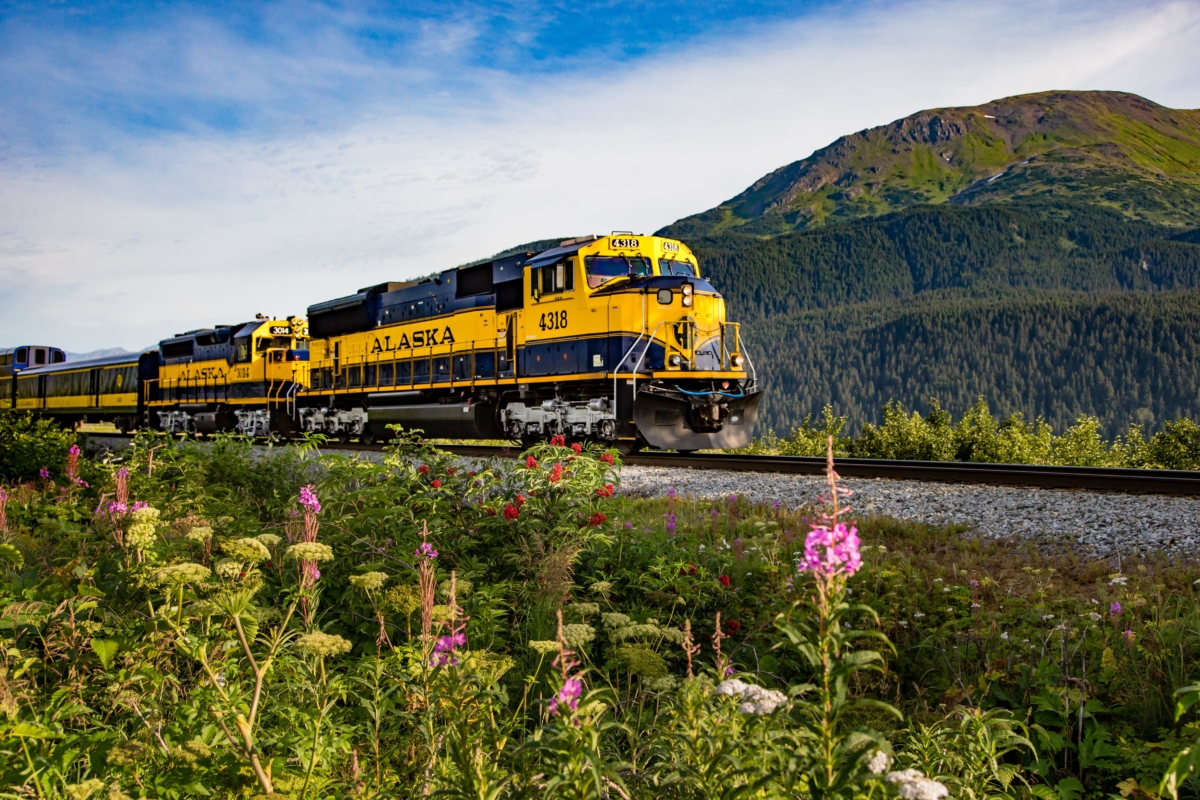
“Folks, it’s 300 feet straight down to the bottom of Hurricane Gulch,” the Alaska Railroad conductor declares, “and … hold on. I don’t know why we’ve paused. Let me find out.”
Passengers glance at each other quizzically, peering out the window to see that, yes, it’s a long, long way down to the bottom of Hurricane Gulch from the railroad trestle that crosses it, and our train is, well, stopped dead, right in the middle of the nearly quarter-mile bridge over the chasm 170 miles north of Anchorage.
“Hope nothing’s wrong,” the conductor adds in a dramatically anxious tone.
The practiced patter is quintessentially Alaskan on the most distinctive train passage in the United States—from Fairbanks to Seward through the Northland wilderness. This is America’s only major state-owned rail operation, and the only full-service railroad left, hauling freight and visitors to and from Alaska’s interior and thereby constituting a vital part of life in the Great Land. Built by the U.S. government to promote development of Alaska, and inaugurated with a golden spike on July 15, 1923 by President Warren G. Harding, the railroad is such a fundamental part of the Alaskan identity that the entire corridor along its 470-mile length is universally known as the Railbelt, since the railroad traversed the landscape long before any highway did.
The Alaska Railroad (AKRR) carries about 500,000 passengers and 5 million tons of freight a year. Three-quarters of Alaska’s 700,000 people live within 50 miles of the railroad line, and its business totals almost a quarter-billion dollars in volume. Coal, gravel, and petroleum are the major commodities that it hauls. Longstanding proposals to extend the line from Fairbanks into Canada and down to the Lower 48 are still extant; though it would be a massive project, consider that this iconoclastic state is the home of the 800-mile Alaska pipeline, a hugely successful achievement that was even more immense and daunting in its time.
Most famously, the railroad is the key artery on a tourist route that starts in the cruise-and-cargo port of Seward, chugs north through the Kenai Peninsula wilderness, stops in Anchorage, heads on to Denali, and then to Fairbanks, capital of the Northland interior. The route includes a couple spots with a dead-on postcard view of Denali (formerly called Mount McKinley), North America’s highest peak at 20,320 feet and, when it’s out of the clouds, the world’s biggest visible mountain mass at more than 18,000 feet. Yes, the train slows to a crawl at these vantages.
So popular is this passage that most passengers onboard trains from May through September are visitors—and such a large share of those are taking the trip as a cruise itinerary add-on that several major lines, such as Princess and Holland America, operate their own cars on the journey from Seward to Fairbanks (from whence visitors fly home).
But the railroad is just as meaningful to Alaskans themselves, who board the train in any season as a handy conveyance to get to places that are hard to reach—or outright impossible—by road. I’ve been aboard, in winter, with a troop of Boy Scouts outfitted for a weekend of snow camping south of Denali, and a pair of fully kitted ski mountaineers headed toward the mountain itself. In the same car were a college student headed home for a holiday in Fairbanks, a caretaker heading up to a winter-shut hotel at Denali National Park’s entrance, and, just to prove tourist season never entirely ends in Alaska, two adventurous travelers from Mexico and Argentina.
“Magnifico!” the latter two exclaimed when I inquired about their impressions of Alaska. “Gigante. Bellissima.” Then they added in English, “We wanted to take amazing pictures, and we definitely are doing that.”
The 12-hour journey provides marvelous scenery, of course. Aside from the premier vantages on Denali and numerous wildlife sightings, there are glimpses of glaciers on the Kenai; the awesome fiord of Turnagain Arm south of Anchorage, clasped between its 5,000-foot pinnacles; burly northland rivers such as the Susitna, Matanuska, and Tanana; and vistas of Northland taiga and still-intact boreal forest that match the immensity of the Great Plains in the lower 48. Winter trips traverse a glistening white wonderland, and autumn reveals a bright butterscotch, coral, and canary canvas of cottonwood, aspen, and birch.
Summer or winter, travelers on the train north of Talkeetna may witness another unique Alaska phenomenon—wilderness residents using the train as their personal delivery vehicle when they return to roadless homes carting boxes of supplies from a visit to Costco in Anchorage. These flagstops represent an old-fashioned rail tradition that now survives in just a few places worldwide.
Alaska off-road residents are there for many of the things that visitors ride the rail to catch a glimpse of—endless miles of untrammeled countryside, azure lakes, cornflower skies, and birch forests as pretty as lace veils. The scenery is no joke, but those who live in America’s largest landscape can’t resist being lighthearted about its distinctions.
“People often ask, where do moose go in Alaska?” says the conductor, who then pauses a second as passengers watch a, yes, moose browsing placidly in a spruce bog.
“The answer is, anywhere they want!” This isn’t only funny, it’s true. And while visitors face more difficulty than moose going just anywhere they want in Alaska, the state’s railroad provides a geographically and culturally vivid window into a place that has been called The Great Land for thousands of years. I suppose there are scores of other scenic rail journeys in the world, and I’ve been on a few myself. It’s the Alaska character that distinguishes AKRR.
And why does the train stop on the 918-foot-long Hurricane Trestle, teetering on a narrow bridge in the middle of a precipitous gorge? “Safety checks!” the conductor declares gleefully, Alaskan to the core.

